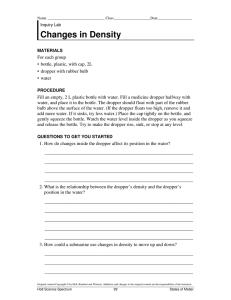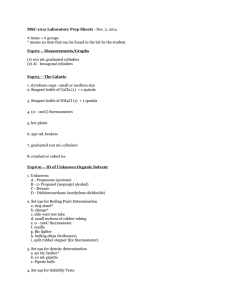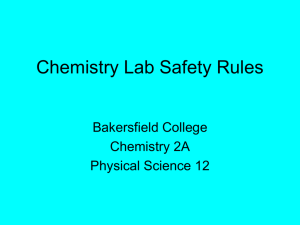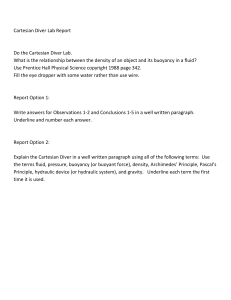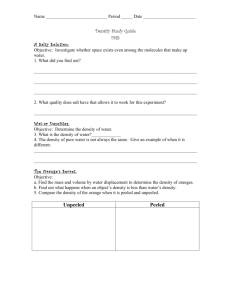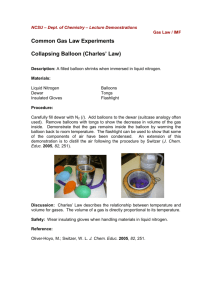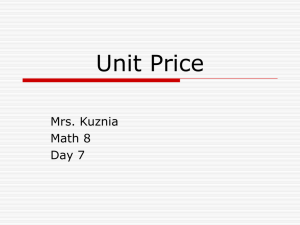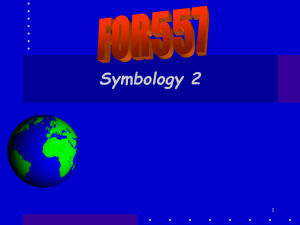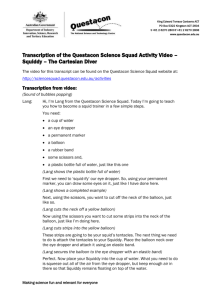Density
advertisement
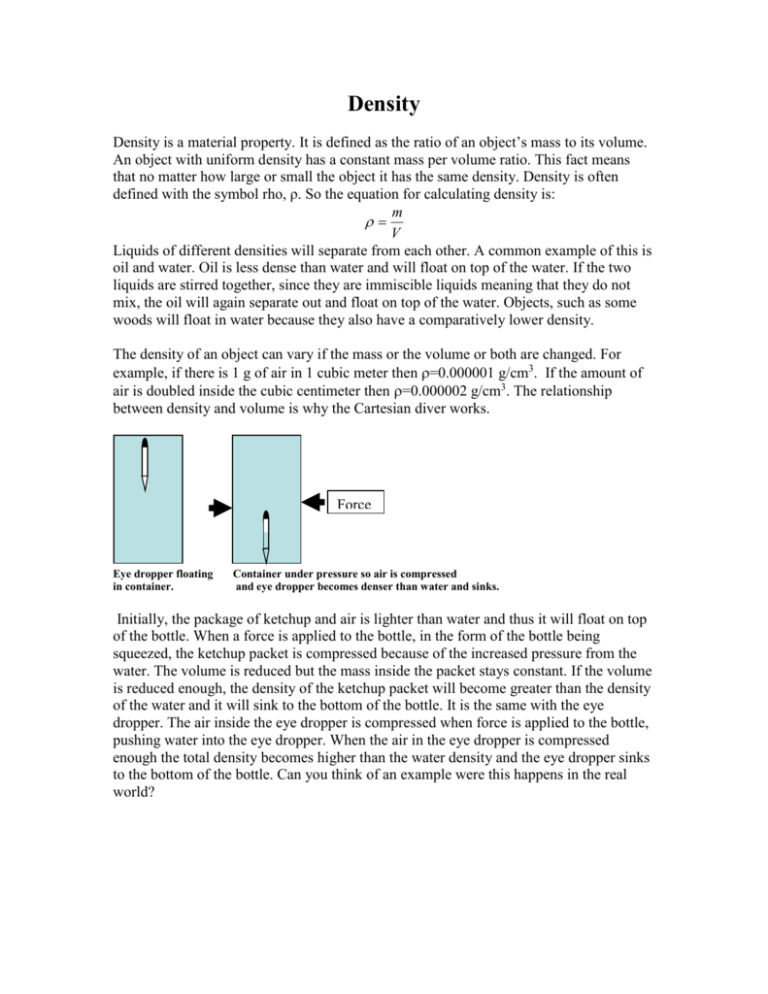
Density Density is a material property. It is defined as the ratio of an object’s mass to its volume. An object with uniform density has a constant mass per volume ratio. This fact means that no matter how large or small the object it has the same density. Density is often defined with the symbol rho, ρ. So the equation for calculating density is: m V Liquids of different densities will separate from each other. A common example of this is oil and water. Oil is less dense than water and will float on top of the water. If the two liquids are stirred together, since they are immiscible liquids meaning that they do not mix, the oil will again separate out and float on top of the water. Objects, such as some woods will float in water because they also have a comparatively lower density. The density of an object can vary if the mass or the volume or both are changed. For example, if there is 1 g of air in 1 cubic meter then =0.000001 g/cm3. If the amount of air is doubled inside the cubic centimeter then =0.000002 g/cm3. The relationship between density and volume is why the Cartesian diver works. Force Eye dropper floating in container. Container under pressure so air is compressed and eye dropper becomes denser than water and sinks. Initially, the package of ketchup and air is lighter than water and thus it will float on top of the bottle. When a force is applied to the bottle, in the form of the bottle being squeezed, the ketchup packet is compressed because of the increased pressure from the water. The volume is reduced but the mass inside the packet stays constant. If the volume is reduced enough, the density of the ketchup packet will become greater than the density of the water and it will sink to the bottom of the bottle. It is the same with the eye dropper. The air inside the eye dropper is compressed when force is applied to the bottle, pushing water into the eye dropper. When the air in the eye dropper is compressed enough the total density becomes higher than the water density and the eye dropper sinks to the bottom of the bottle. Can you think of an example were this happens in the real world?
